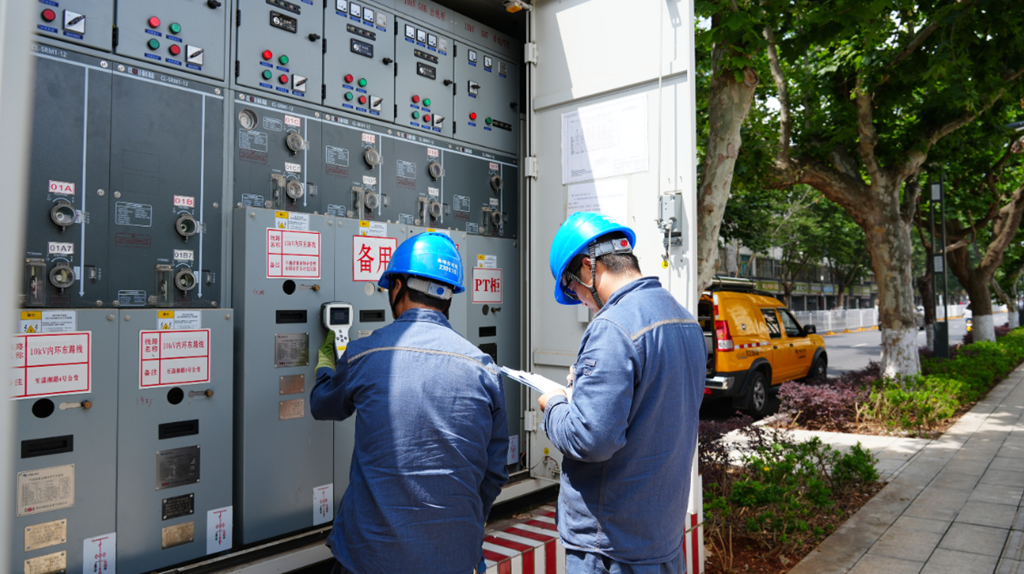Gaokao shows pulse of the times, warmth of the nation
Feeling the pulse of the times and the warmth of the nation through gaokao

Power-supply workers in east Yunnan's Qujing gear up for Gaokao on June 5. Photo/Yunnan Daily
In the coming days, China will enter the time of gaokao, or the national college entrance examinations. 13.35 million candidates are expected to step into examination halls across the country, picking up their pens to seek answers for their futures. Chinese society is both "quieting down" and "mobilizing" to provide thoughtful, heartfelt support for the candidates and to ensure fairness and integrity in every aspect of the process.
Over the past several decades, the significance of gaokao has long extended far beyond being a mere college entrance exam. It resonates with China's progress and development, embodying the dreams and hopes of countless young people.
Looking back, the resumption of the gaokao system marked an important turning point in history. It built a pathway through which individuals could change their lives by acquiring knowledge and committing to learning. One test paper and one pen have provided generations of students with the opportunity to enter a broader world. Through standardized exams, strict confidentiality procedures, and open and transparent admissions processes, gaokao safeguards educational fairness. This sense of fairness is particularly distinctive on a global scale. The vast majority of people believe that gaokao serves as an important line of defense for social equity and justice, and its credibility has been earned through decades of unwavering commitment to upholding rules and adhering to procedures.
The 2025 gaokao continues to move in the direction of promoting equitable allocation of educational resources. The Chinese Ministry of Education is further implementing national enrollment coordination programs that support central and western regions, as well as special admission plans for rural students. Leading universities are moderately increasing their enrollment quotas in populous provinces such as Henan and Sichuan, as well as in western provinces. The publicly funded teacher training program for graduates from formerly impoverished counties has been expanded.
The 2025 gaokao also includes specially prepared Braille test papers for 16 blind candidates from 12 provinces. The gaokao system continues to improve by listening to public voices and responding to the demands of the times. It is precisely thanks to this constantly evolving selection mechanism that millions of individuals have been able to transform their lives.
The vitality of gaokao lies in its deep roots in China's specific realities and its ability to evolve with changing national circumstances and public needs. A major highlight of the 2025 gaokao is the addition of 29 new undergraduate majors introduced by the Chinese Ministry of Education. These include low-altitude technology and engineering, carbon neutrality science and engineering, medical devices and equipment engineering, digital theater, and AI education, among others. These new programs place greater emphasis on interdisciplinary integration and alignment with emerging fields and cutting-edge technologies. They reflect the higher education sector's swift response to national strategies, market demands, and technological advancement - aimed at meeting the urgent need for versatile, cross-disciplinary talent in the digital age.
It's fair to say that this year's gaokao has sensitively captured the pulse of the times by seamlessly integrating the education chain and talent pipeline with the industrial and innovation chains. At the same time, the further promotion of the "3+1+2" model has given students more flexibility to choose exam subjects based on their interests and strengths.
In recent years, the introduction of comprehensive quality evaluations and initiatives such as the "Qiang Ji Ji Hua," or "Strengthening Foundation Plan," allows college admissions to better reflect students' overall capabilities and unique talents. This approach also selects promising students in key foundational disciplines that are critical to national strategic needs, thereby reserving core talent to address the country's key technological bottlenecks.
Gaokao is not just an exam; it reflects the temperature and value orientation of a society. In the early summer of 2025, we find that, amid the intense preparation process, there is an increasing emphasis on psychological care for gaokao candidates from families, schools, and society as a whole. Many schools have launched distinctive pre-exam mobilization activities, replacing the traditional "pre-exam mobilization ceremony" with a "heartwarming last lesson." Some taxi companies in several cities have initiated a "no disturbance during gaokao" campaign, advising drivers not to play audio or engage in conversation, thereby providing candidates with a quiet space in the vehicle. The shift from "grand displays" to "silent guardianship" reflects the rationality and maturity of Chinese society.
From "thousands of thousands vying for a narrow pass" to "a multi-faceted overpass for talent development," gaokao has continuously evolved with the times, yet its significance in personal growth remains unchanged, as does the core spirit of perseverance it embodies. As we marvel at achievements like the Chang'e lunar missions and the Jiaolong deep-sea submersible, we must recognize that behind these accomplishments are countless young students stepping from one classroom to another, crossing the bridge of gaokao to move step by step toward the forefront of the nation's technology.
Their experiences powerfully demonstrate that in China, as long as you are willing to work hard, strive, and have talent, the examination room will provide you with a fair opportunity, and the country will offer you a vast stage. We wish every candidate the best in showcasing their abilities, and may the fair sunlight illuminate the path of every dreamer.